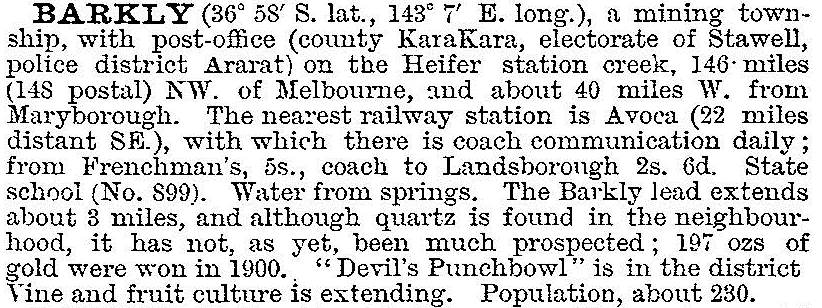Barkly
Barkly is a rural locality situated in the goldmining district which extended in an arc from Avoca to St Arnaud. It is about 40 km south of St Arnaud and is associated with Navarre, 10 km to its west.
Barkly was originally known as the Navarre goldfield (1858) and in 1861 a township was surveyed. The name was changed to Barkly, after the Victorian Governor, Sir Henry Barkly (1856-63). Although there had been a rush to the diggings there was little or no deep lead or reef mining and Barkly barely developed beyond a large village. A Catholic school was open for a while during the early 1860s and a government school was opened in 1867. Agriculture and grazing soon began to assume importance and by the turn of the century had nearly displaced all mining activity. In 1903 Barkly was described in the Australian handbook:

A public hall was used for services held by three church denominations until in 1935 a weatherboard private Anglican chapel was transferred from a pastoral station. The small Church of St Mary and St John became a local landmark. In 1981 the post office was closed and the school’s closure followed four years later. Barkly’s third public hall (1958), tennis courts and recreation reserve are the main community facilities.
Barkly’s census populations have been:
| Census date | Population |
|---|---|
| 1871 | 171 |
| 1891 | 291 |
| 1921 | 140 |
| 1961 | 66 |
Further Reading
Eulalie Driscoll, The Barkly story 1859-1985, the author 1985
W. Jacobs and K. Twigg, The Pyrenees Shire: Avoca Shire heritage study 1864-1994, 1995


